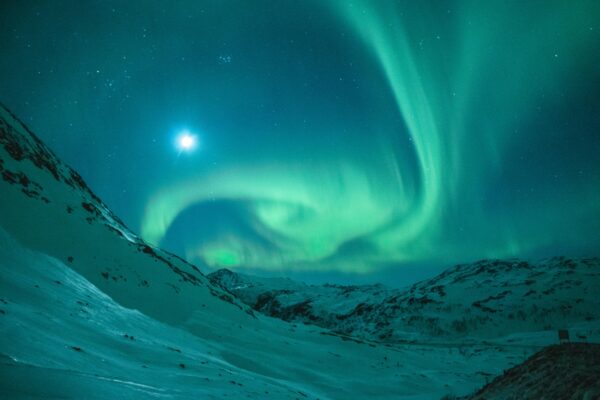Aurora Admin has just launched its most significant update yet, transforming how aurora chasers predict and experience the northern lights. This isn't just another incremental improvement. This is a fundamental shift in how we understand and forecast auroras in real-time.
Why Traditional Aurora Forecasting Falls Short
For decades, aurora chasers have relied on two primary metrics: the KP index and NOAA's Ovation model. Both tools serve their purpose, but both share a critical limitation: they rely on historical data rather than what's happening right now in the solar wind streaming toward Earth.
The KP index measures geomagnetic activity using a three-hour average of the past three hours. By the time you check your KP forecast, you're looking six hours into the past. For a phenomenon as dynamic and fast-changing as the aurora borealis, that's like trying to catch lightning with outdated weather reports.
Aurora Admin takes a different approach entirely. Rather than averaging historical data, our system analyzes real-time solar wind measurements as they arrive at monitoring satellites positioned between Earth and the Sun. This means you're seeing what's actually headed toward our planet right now, not what happened hours ago.
The Science Behind the New Algorithm
The previous Aurora Admin algorithm focused primarily on the interplanetary magnetic field (IMF), particularly the Bz component. When Bz turns southward (negative), it typically triggers geomagnetic activity and auroras. This approach worked well for straightforward aurora events, but nature is rarely straightforward.
Our team discovered something fascinating during high-activity periods: auroras were appearing even when Bz values remained positive. Traditional forecasting models would have missed these events entirely. This observation led us to ask a critical question: what other solar wind parameters were we overlooking?
The answer required looking beyond standard aurora science into fields like process control and manufacturing analytics. By applying mathematical models typically used in industrial systems, we developed an algorithm that tracks multiple concurrent pathways to aurora formation.
How the Multi-Pathway System Works
The new forecasting model doesn't just look at one trigger for auroras. Instead, it simultaneously monitors several distinct pathways:
The Traditional Pathway: Southward Bz component of the IMF remains important, but it's now just one signal among many.
Solar Wind Density: High-density solar wind can trigger auroras even when other parameters seem unfavorable.
Dynamic Pressure Changes: Sudden increases in solar wind pressure can compress Earth's magnetosphere and spark auroras.
Solar Wind Speed: Fast-moving solar wind streams interact differently with our magnetic field than slower flows.
Combined Parameter Effects: Sometimes multiple moderate factors combine to create aurora conditions that no single metric would predict.
When the algorithm identifies a leading pathway (typically during high-activity events), Aurora Admin now explains why it's predicting auroras. This transparency serves a purpose beyond just showing our work. We want to spark curiosity about the science behind the lights. The more you understand about solar wind dynamics, magnetospheric physics, and particle interactions, the more fascinating your aurora-chasing experience becomes.
Note: Insights will be available when we detect a primary pathway. Quiet nights may not show insights.
Southern Hemisphere Accuracy
It's been a goal for us to add global coverage. Most data sources are for the northern hemisphere. We have added multiple data sources for enhanced southern hemisphere accuracy.
Real-Time Arrival Estimates
One of the most practical additions to the new system is the estimated arrival time displayed in minutes. This calculation uses current solar wind measurements to predict when the particles we're tracking will reach Earth's magnetosphere.
Keep in mind there's often a delay between when the particles arrive and when you see visible auroras. The ions need time to interact with our atmosphere and produce the light displays we all chase. Use this arrival time to position yourself at your ideal viewing location before the show begins.
Note: Arrival times will be available when we detect a primary pathway. Quiet nights may not show insights.
Enhanced User Experience
Beyond the forecasting improvements, we've refined the entire Aurora Admin interface:
Updated Tooltips: Clearer explanations help you understand what each metric means and why it matters for your aurora-chasing decisions.
Visual Moon Phase Display: The moon phase indicator now shows an actual visual representation of the lunar phase, making it easier to plan around moonlight conditions for photography.
Modern Space Theme: The website design now reflects current design standards with a cohesive space-inspired aesthetic that makes the interface both beautiful and functional.
Improved Mobile Notifications: The notification settings panel has been completely reworked for better mobile usability, ensuring you never miss an aurora alert when you're on the go.
What Comes Next
This algorithm update represents a major milestone, but Aurora Admin's development continues. Our roadmap focuses on enhancing two additional forecasting systems:
Substorm Detection: We're working to alert you about geomagnetic substorms before major observatories, giving you earlier warning of aurora intensifications.
CME Forecasting: Coronal mass ejection predictions are being refined to provide better advance notice of incoming solar storms.
The goal remains constant: get aurora chasers the information they need faster and more accurately than anyone else in the field.
Your Feedback Shapes Aurora Admin
Every suggestion from our community influences Aurora Admin's evolution. Whether you've noticed something unusual in the forecasts, have ideas for new features, or simply want to share your aurora-chasing stories, we want to hear from you.
Feel free to request a feature or provide feedback here.
Aurora forecasting sits at the intersection of space physics, data science, and the pure wonder of natural phenomena. We're building Aurora Admin for people who share that fascination, people who want to understand not just when to look up, but why the sky is performing its ancient light show.
Join us in pushing the boundaries of what's possible in aurora forecasting. The next breakthrough might come from your observation, your question, or your insight from a night spent watching the northern lights dance across the sky.
Get Aurora Alerts and never miss another display.

